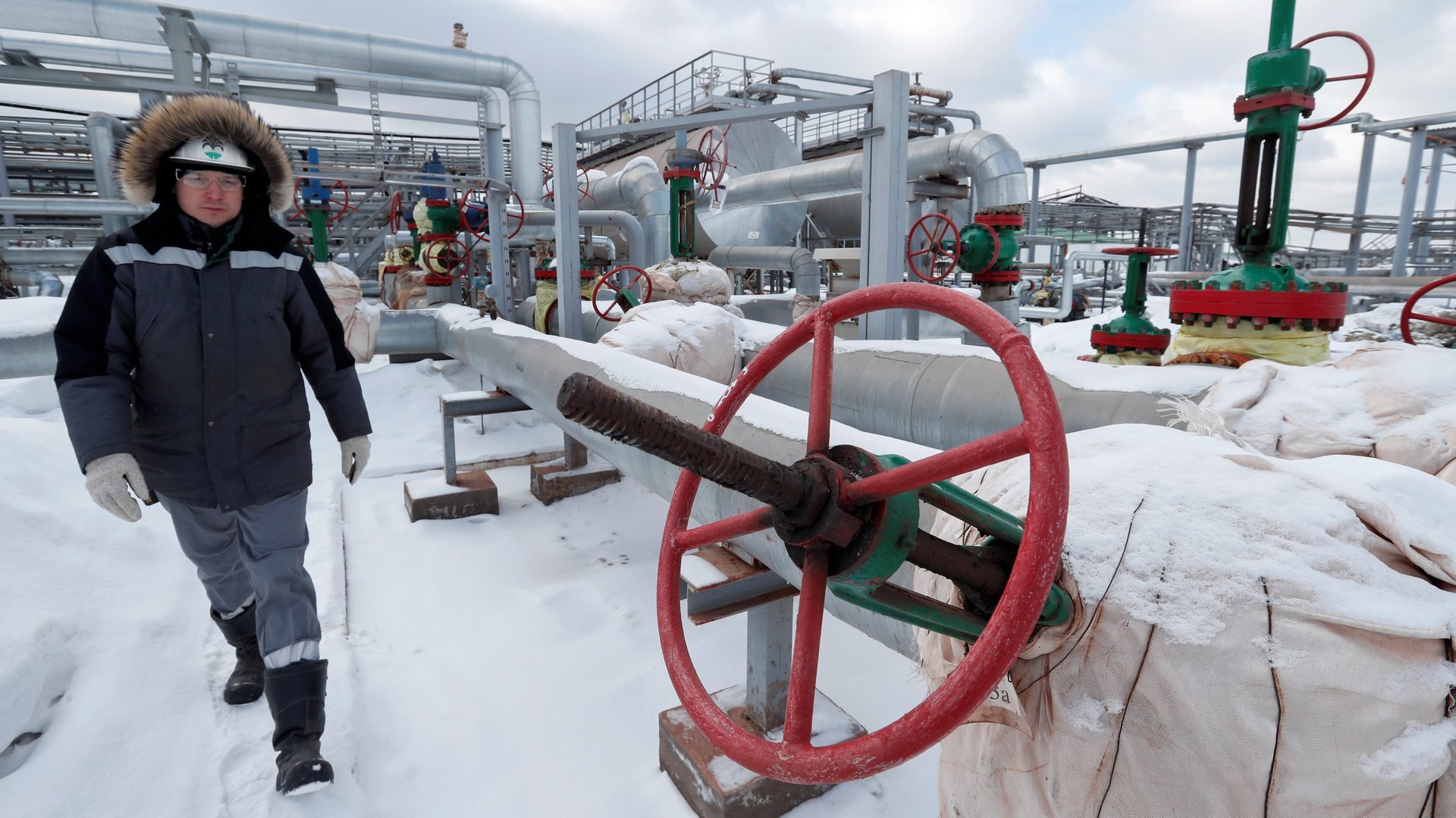Oil prices are up but the taps aren’t flowing like they should be
The price of oil is at a seven-year high, above $88 dollars per barrel. Demand is rising and may surpass pre-pandemic levels by the end of 2022, the International Energy Agency forecast last week, as the global economy seems not to have been stalled by omicron. And yet, many top oil-producing countries are falling short of their quotas. What gives?


The price of oil is at a seven-year high, above $88 dollars per barrel. Demand is rising and may surpass pre-pandemic levels by the end of 2022, the International Energy Agency forecast last week, as the global economy seems not to have been stalled by omicron. And yet, many top oil-producing countries are falling short of their quotas. What gives?
At the beginning of the pandemic, when travel seized up and oil demand evaporated, the price of oil crashed below zero for the first time. In the aftermath, a lot of oil production also ground to a halt. Since then, producers have sought to rebalance the market by cautiously bringing some drilling back online.
But that process has hit a variety of snags around the world. The gap between supply and demand of crude oil globally increased from December to January, and now stands at 1.5 million barrels per day, above the approximately 81 million per day currently in production, says Louise Dickson, senior oil markets analyst at Rystad Energy, a business intelligence firm.
Oil production faces a variety of hold-ups
Behind the supply gap are a few longstanding problems, and a few short-term surprises.
First, the surprises. A drone operated by Houthi forces in Yemen struck an oil storage facility in the United Arab Emirates. Over the last month, various mechanical outages have befallen oil pipelines and other infrastructure in Iraq, Ecuador, and Libya. More outages are feared in Kazakhstan, due to political turmoil; in Texas, due to cold weather (again); and in Brazil, due to coronavirus outbreaks.
Meanwhile, several members of the Organization of Petroleum Exporting Countries are struggling to reverse-engineer well closures (known as shut-ins), a process that can be expensive and technically complex, especially offshore or in difficult terrain. Russian producers are waiting to see if the government will bring back tax breaks it cut last year (and whether the US will impose sanctions on the sector, depending on the outcome over ongoing talks with NATO). In Nigeria and Angola, production is hampered by poor infrastructure and falling investment.
In January, OPEC will be about 700,000 barrels per day short of its quota, almost the same volume by which the group has raised its quota in the last couple of months.
“Among the OPEC members there’s a lot of inability to ramp up production after these shut-ins,” Dickson said. “They’ve been increasing their targets but not meeting them.”
The gap may be short-lived. Oil production in Saudi Arabia and the US is booming. Russia and the US could find common ground on restoring the Iran nuclear deal, which could enable that country to bring an additional 1 million barrels per day back into the market. And if operational hurdles can be overcome, OPEC countries still have more production equipment on standby than they did before the pandemic.
Recent projections from the IEA, the US Energy Information Administration, and the consulting firm Wood Mackenzie see the oil market reaching a surplus by the end of the first quarter.